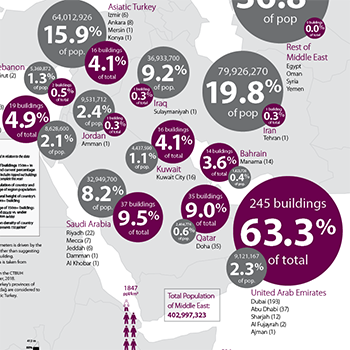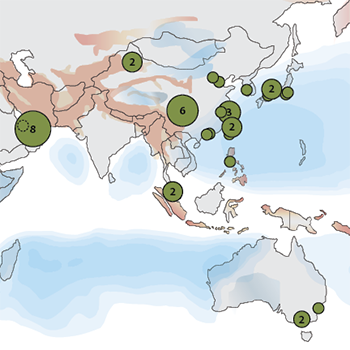Filter by
You must be a CTBUH Member to view this resource.
Almas Tower
Building
Completed, 2008
office
concrete
360.0 m / 1,181 ft
68
5
1700
35
7 m/s
160,000 m² / 1,722,226 ft²
You must be a CTBUH Member to view this resource.
You must be a CTBUH Member to view this resource.
The main contractor is the supervisory contractor of all construction work on a project, management of sub-contractors and vendors, etc. May be referred to as "Construction Manager," however, for consistency CTBUH uses the term "Main Contractor" exclusively.
Other Consultant refers to other organizations which provided significant consultation services for a building project (e.g. wind consultants, environmental consultants, fire and life safety consultants, etc).
Material Supplier refers to organizations which supplied significant systems/materials for a building project (e.g. elevator suppliers, facade suppliers, etc).
You must be a CTBUH Member to view this resource.
Usually involved in the front end design, with a "typical" condition being that of a leadership role through either Schematic Design or Design Development, and then a monitoring role through the CD and CA phases.
The Design Engineer is usually involved in the front end design, typically taking the leadership role in the Schematic Design and Design Development, and then a monitoring role through the CD and CA phases.
The Design Engineer is usually involved in the front end design, typically taking the leadership role in the Schematic Design and Design Development, and then a monitoring role through the CD and CA phases.
The CTBUH lists a project manager when a specific firm has been commissioned to oversee this aspect of a tall building’s design/construction. When the project management efforts are handled by the developer, main contract, or architect, this field will be omitted.
The main contractor is the supervisory contractor of all construction work on a project, management of sub-contractors and vendors, etc. May be referred to as "Construction Manager," however, for consistency CTBUH uses the term "Main Contractor" exclusively.
Other Consultant refers to other organizations which provided significant consultation services for a building project (e.g. wind consultants, environmental consultants, fire and life safety consultants, etc).
Material Supplier refers to organizations which supplied significant systems/materials for a building project (e.g. elevator suppliers, facade suppliers, etc).
The Middle East: 30+ Years of Building Tall
28 November 2018 - CTBUH Research
CTBUH Study Examines Tallest Buildings with Dampers
22 August 2018 - CTBUH Research

20 October 2018
The Middle East: 30+ Years of Building Tall
CTBUH Research
The Middle East region is hosting its first CTBUH International Conference since 2008. In that year, there were 119 completed buildings of 150 meters or...
Almas Tower is the centerpiece of the Jumeirah Lake Towers Free Zone, a multi-tower office high-rise development. Designed to house the Dubai Diamond Exchange, Almas Tower, or “Diamond Tower” in Arabic, takes inspiration from the unique shape of diamonds. The two-story podium that houses the diamond exchange is one of the building’s most architecturally striking features, with eight triangles inspired by the facets of a cut diamond jutting out from the core.
Along with its podium, the tower is significant for its use of two separate but overlapping conformations attached to a single core. In plan, this unique design appears as two diagonally offset ellipses that converge along their east-west faces. Because the southern component is 12 stories taller than the northern component, the tower has a built-in vertical asymmetry that informs its design. An 81-meter spire attached to the southern mass further distinguishes it from its northern counterpart and marks it as the main structural element of the building. The northern mass appears rounded with a roof slanted to the east, while the southern mass – though still rounded – appears straighter and slimmer with a roof slanted to the west.
Along with visual differences, both conformations have design aspects that address various environmental needs. The northern face is designed to maximize cooler northern sunlight via semi-transparent glass, while the southern face protects against heat gain with a high-performance finish.
The building’s design incorporates high-degrees of flexibility in order to accommodate the needs of the client, including office floors with no less than 80 percent usable space and column-free offices. Ultimately, Almas Tower’s efficient design and expressive configuration make it a unique edition to Dubai’s crowded skyline.

20 October 2018
The Middle East: 30+ Years of Building Tall
The Middle East region is hosting its first CTBUH International Conference since 2008. In that year, there were 119 completed buildings of 150 meters or...

30 July 2018
World’s Tallest Buildings with Dampers
As tall buildings continue to be built in seismically-active and cyclone-prone areas, the need to augment the structures of these buildings with dynamic modification devices...

14 November 2013
The Middle East: 20 Years of Building Skyscrapers
Twenty years ago, the Middle East contained only one skyscraper over 150 meters in height. It is now estimated that by the end of 2015...

31 December 2008
Tallest Buildings Completed in 2008
Against the backdrop of global economic crisis, 2008 witnessed the most successful year of skyscraper construction to date, with more skyscrapers constructed globally within a...
28 November 2018
CTBUH has released a Tall Buildings in Numbers (TBIN) interactive data study examining the relationship between high-rise growth and population in the Middle East.
22 August 2018
CTBUH has released a Tall Buildings in Numbers (TBIN) interactive data study on the world's tallest buildings with dampers.
13 October 2016
The Council is pleased to announce the Top Company Rankings for numerous disciplines as derived from the list of projects appearing in 100 of the World’s Tallest Buildings.
31 December 2008
Against the backdrop of global economic crisis, 2008 witnessed the most successful year of skyscraper construction to date, with more skyscrapers constructed globally within a single year than ever before and the average height of the tallest ten constructed in 2008 rising to 319 meters.
Subscribe below to receive periodic updates from CTBUH on the latest Tall Building and Urban news and CTBUH initiatives, including our monthly newsletter. Fields with a red asterisk (*) next to them are required.
View our privacy policy